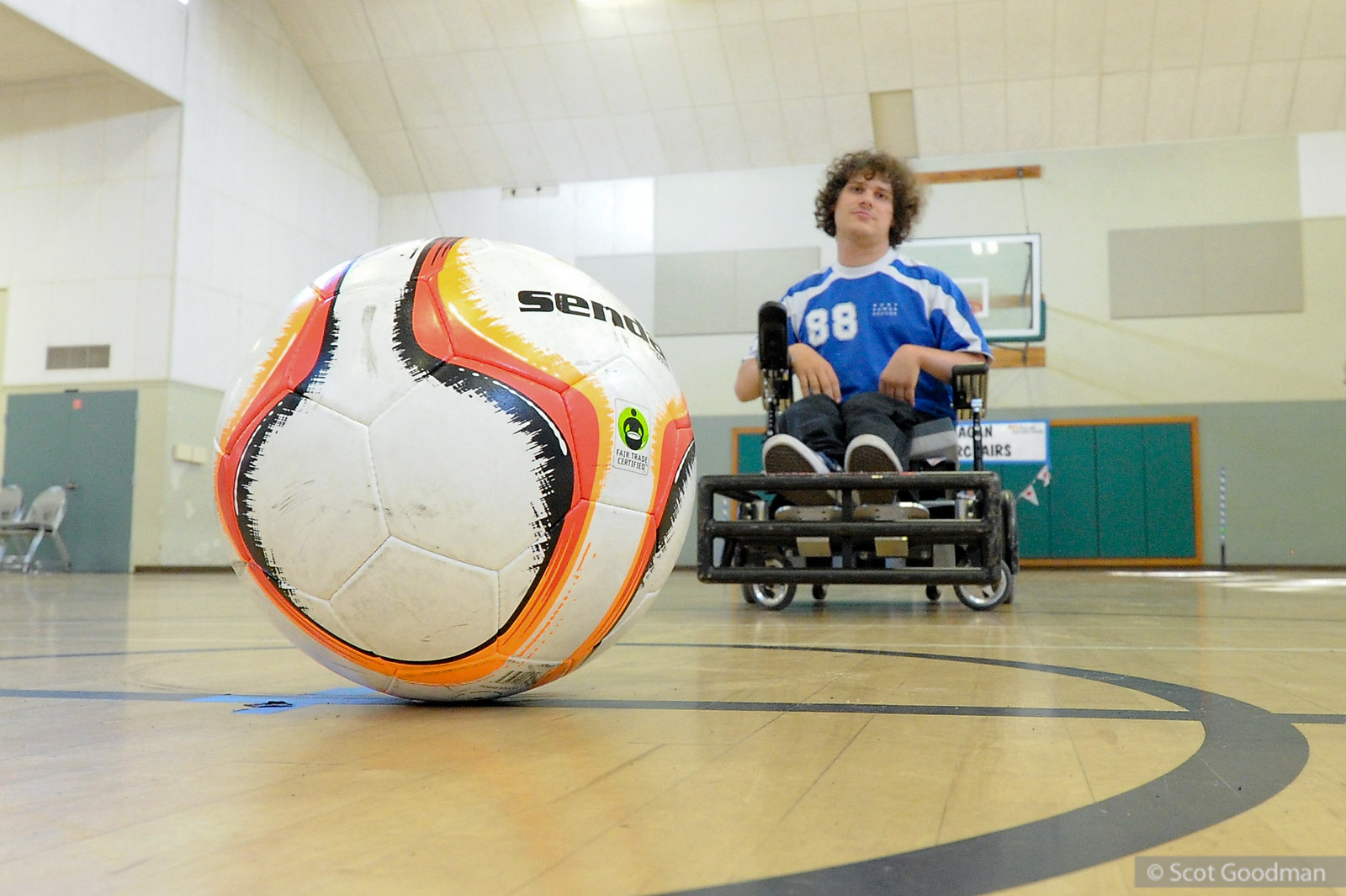Soccer/Power Soccer
About
There is a rapidly growing adaptive sport that is changing the way people think of those using a power chair. That sport is power soccer. It is not only changing the perception others have, but also how participants think of themselves. They are athletes.
Power soccer is a mash up of traditional soccer and demolition derby.
The game is typically played on a standard basketball court with two 20-minute periods. There are eight players on the court at a time, four on each team. A team consists of a goalie, a center, a strongside wing, and a weakside wing. The center controls the flow of the game, both offensively and defensively, as well as handles the ball distribution. The strongside wing works in tandem with the center to move the ball up the court while the weakside wing occupies the lane where the other two players are not located to ensure coverage. In most cases, players specialize in one of the positions.
Equipment
Click here for a list of power soccer equipment suppliers.
Competition
At some point, each player must make a decision whether to play recreationally or competitively. There are locations across the country — there are recreational teams and competitive teams to choose from, depending on an individual’s preference, ability level, and commitment.
If you’re new to the sport you should start off with a recreational team. Then, if you desire, you can take it to the next level.
Currently, power soccer is not a Paralympic sport. However, the international Federation, FIPFA has be recognized by the IPC.
Learn More
Since anyone that uses an electric chair can play power soccer, you don’t need much when you first jump into the sport. Most teams (or Move United members) have access to loaner equipment.
Although you can use your own wheelchair, it is not recommended if that is your only means of mobility so most players acquire a secondary chair to play. The primary requirement is there must be a foot guard for the chair.
The level of play has improved with the advent of a specialized chair, the Strike Force Power Wheelchair, which is faster and more dynamic. It has leveled the playing field in the game in terms of equipment. The focus is now on the athlete.
The chair also provides a faster pace for the athlete as well as the spectator. It is more fan friendly and it allows the athlete to pass the ball more effectively. In the past, there have been safety concerns such as chairs flipping over, but the new chair has safeguards in place to prevent that. Other recommendations are helmets, rollbars, or other safety equipment is available to those who want it.
Find a Program Near You
Ready to try out Power Soccer? Click here to find a location near you!




